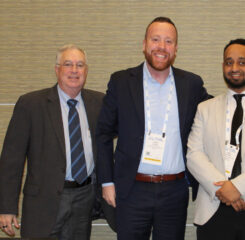The roundtable discussion covered the barriers and opportunities from many angles – participation options, alignment of beneficiaries, financial methodologies and gainsharing, and regulatory waivers. “Meaningful” participation was evaluated in the context of PAC and LTC providers sharing in both the care delivery responsibilities but also the financial rewards of reforming care. Ultimately, the conclusion was that a facility’s participation in an ACO might be approached one way for short-stay or PAC population and differently for a LTC population, as the goals of the care are different.
One of the ideas discussed was how to create a nested bundle or episodic payment for Skilled Nursing Facilities (SNFs) who care for ACO beneficiaries. The bulk of this proposal were derived from previous work LeadingAge and other PAC associations were engaged in before the pandemic to design new alternative payment models that provided a meaningful role for SNF and LTC providers. The roundtable participants agreed that there is merit in this approach but more work needs to be done on how to structure the payment—one average rate for every episode versus a condition-specific bundled payment; how the shared savings are distributed between the ACO and the SNF and who pays the SNF—CMS or the ACO.
The diverse group also found consensus that accountable care is particularly important for Medicare beneficiaries who receive long-term care and that these individuals are infrequently attributed to ACOs today. With this in mind, the group explored the idea of long-term care providers being included in how these LTC individuals are aligned to an ACO. Such a change could position LTC providers to have a seat at the table for ACO gainsharing discussions, which is currently missing from ACO/LTC relationships. This is a position LeadingAge has advocated for CMMI to adopt in recent years. The group also examined what would need to change within ACO regulations related to benchmarking and risk scores for a LTC population even suggesting MDS assessment data might be included in risk scores.
While some areas of disagreement remained at the end of the meeting, there were considerable areas identified for better collaboration that creates opportunities for both ACOs and PAC/LTC providers. The event was convened by the National Association of ACOs (NAACOs) and the American Health Care Association. The areas of consensus will be drafted into a white paper for further review and once finalized, the goal is to share with CMS and CMMI to influence future models and reform existing models.

 Shutdown Week Three: Impact of Ongoing Closure on Affordable Housing
Shutdown Week Three: Impact of Ongoing Closure on Affordable Housing Colleagues on the Move, December 17, 2025
Colleagues on the Move, December 17, 2025


